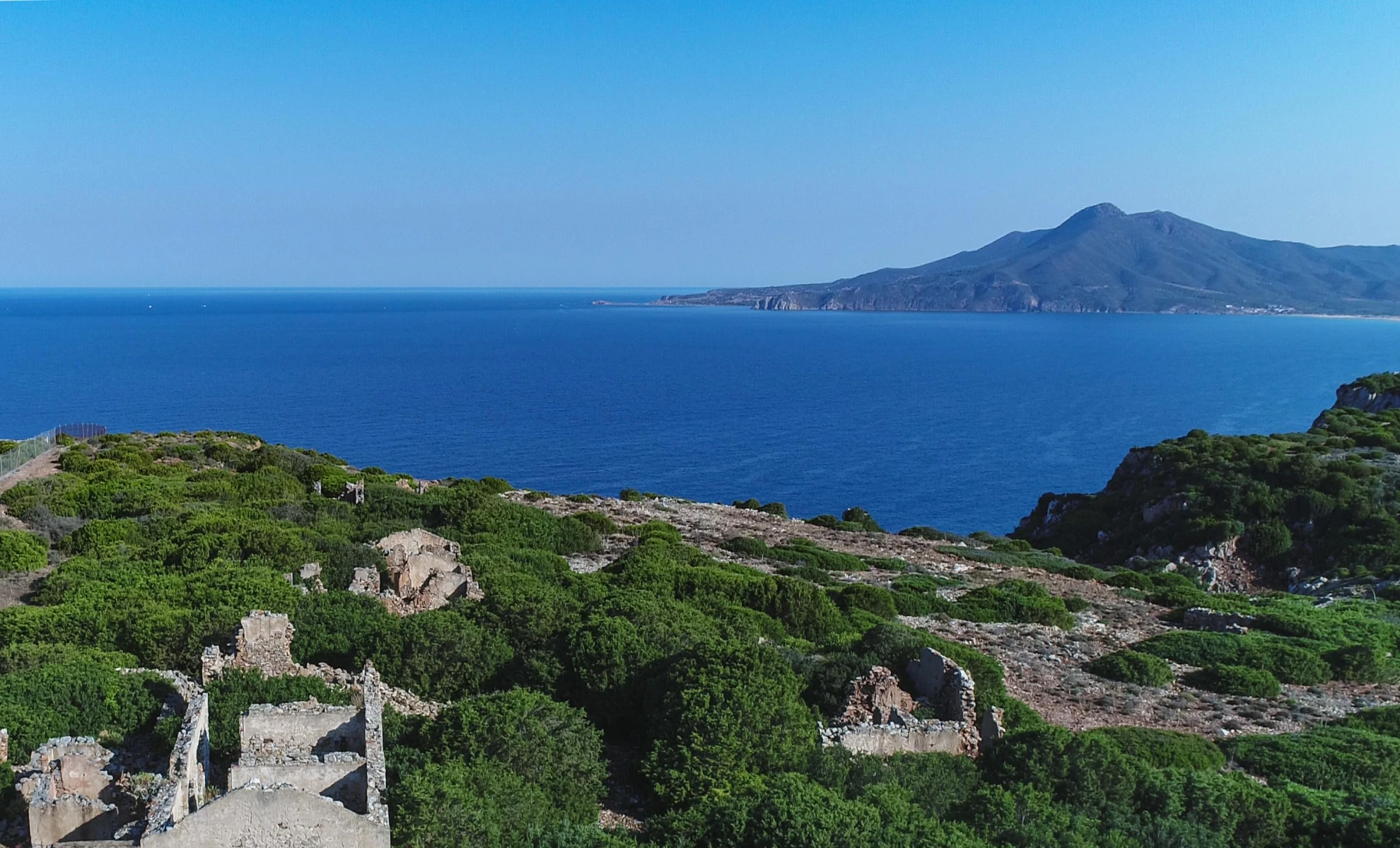To see these cliffs overlooking the sea, towards the horizon in direction of Capo Pecora, it seems odd to think that a tragic massacre took place here.
The train travels between the views of the Gallery | Ph. Enrico Nocera
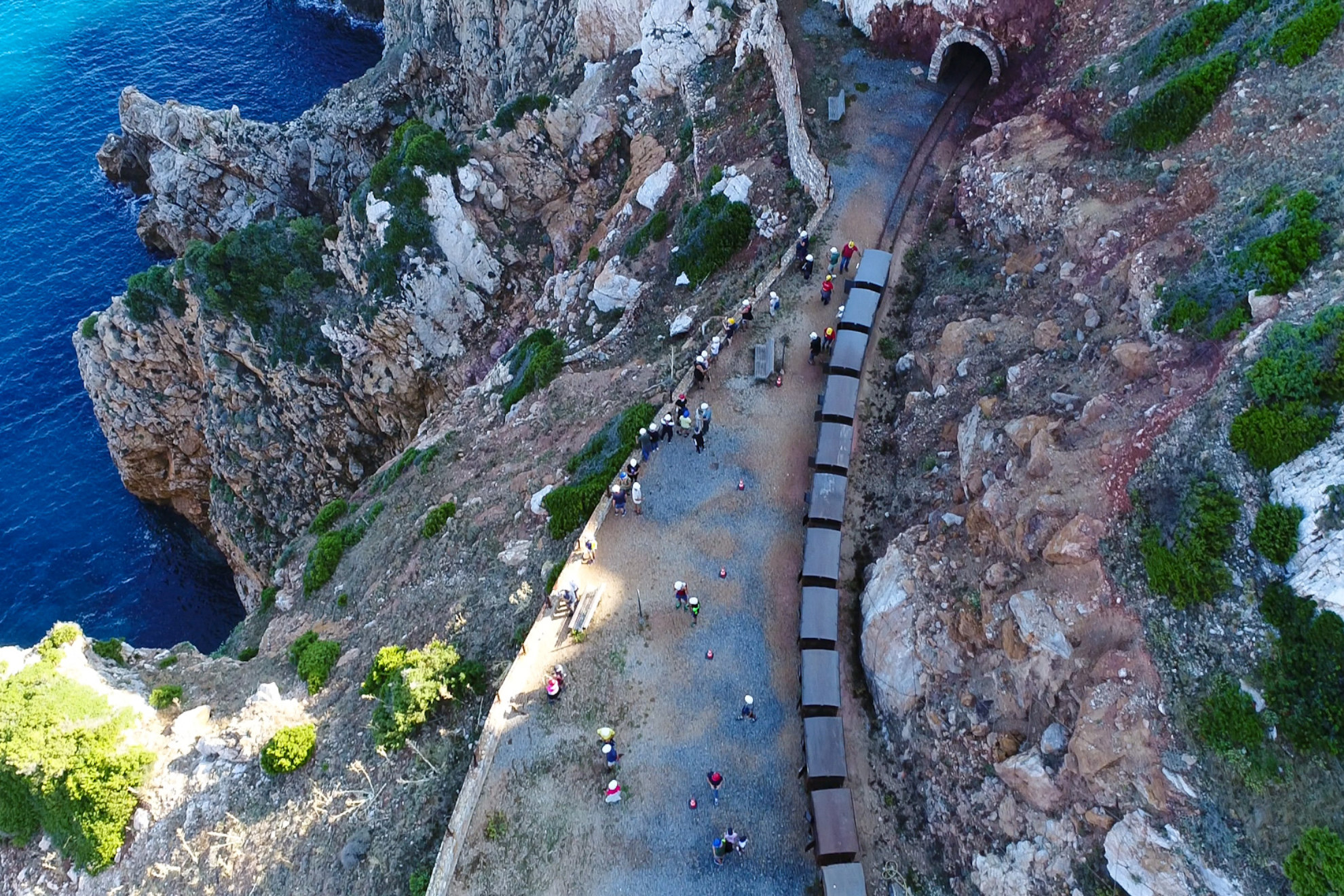
It was 1904 when the tunnels of the Pranu Sartu mine, in the small town of Buggerru, became the background of the first strike in Italian industrial history. Three workers were dead and eleven injured after the clashes when miners opposed the exhausting working conditions imposed by the French owner company: no rest shifts, the lowest wages in Europe, exploitation of child labor, even the obligation, for miners, to pay for the needed equipment.
“We don't care about Pellico, Gioberti, Cavour, we tell our children about other heroes: Felice Littera, murdered in Buggerru; Salvatore Montixi, murdered in Buggerru; Giustino Pittau, murdered in Buggerru”From “History Lessons” by Manlio Massole
Even today, the Henry Gallery - the main tunnel in the belly of Pranu Sartu - is here to witness to this page of history. A mine where mainly metalliferous limestone was extracted, in the heart of South-West Sardinia. The area is rich in mining facilities (just think of the nearby Porto Flavia) precisely because it is very ancient, surrounded by millenary rocks and a great variety of minerals, such as zinc and schist.
Stefano Cappai, hiking and environmental guide, knows every corner of the Henry Gallery. He accompanies us on this journey. We board a small battery-powered train - an ideal descendant of the old steam locomotives that ran on these same tracks - and immerse ourselves in the labyrinth of the mine. After a few minutes, the dark of the tunnels is broken by an incredible view, 50 meters above sea level. Below us, the waves crash on the cliffs where the gallery stands.
The ruins of Pranu Sartu look towards Capo Pecora | Ph. Enrico Nocera
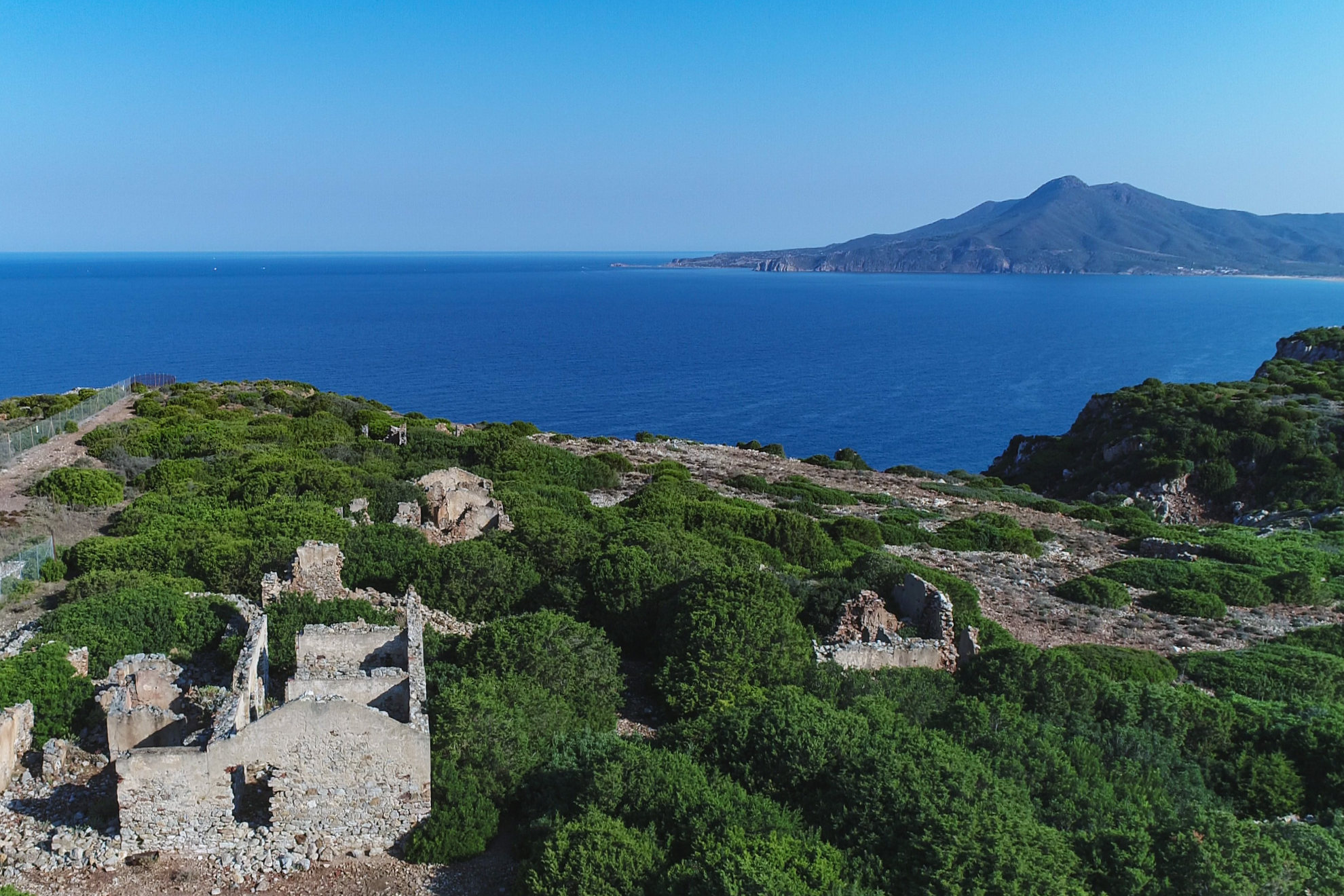
A square welcomes the maneuver of the train, while visitors - almost incredulous - observe the profile of the coast in the distance, brushed by the turquoise sea. Behind us, on the top of Pranu Sartu, the ruins of an ancient village still stand, where miners lived since the mid-nineteenth century.
The mining village blends into the rocks overlooking the sea | Ph. Enrico Nocera
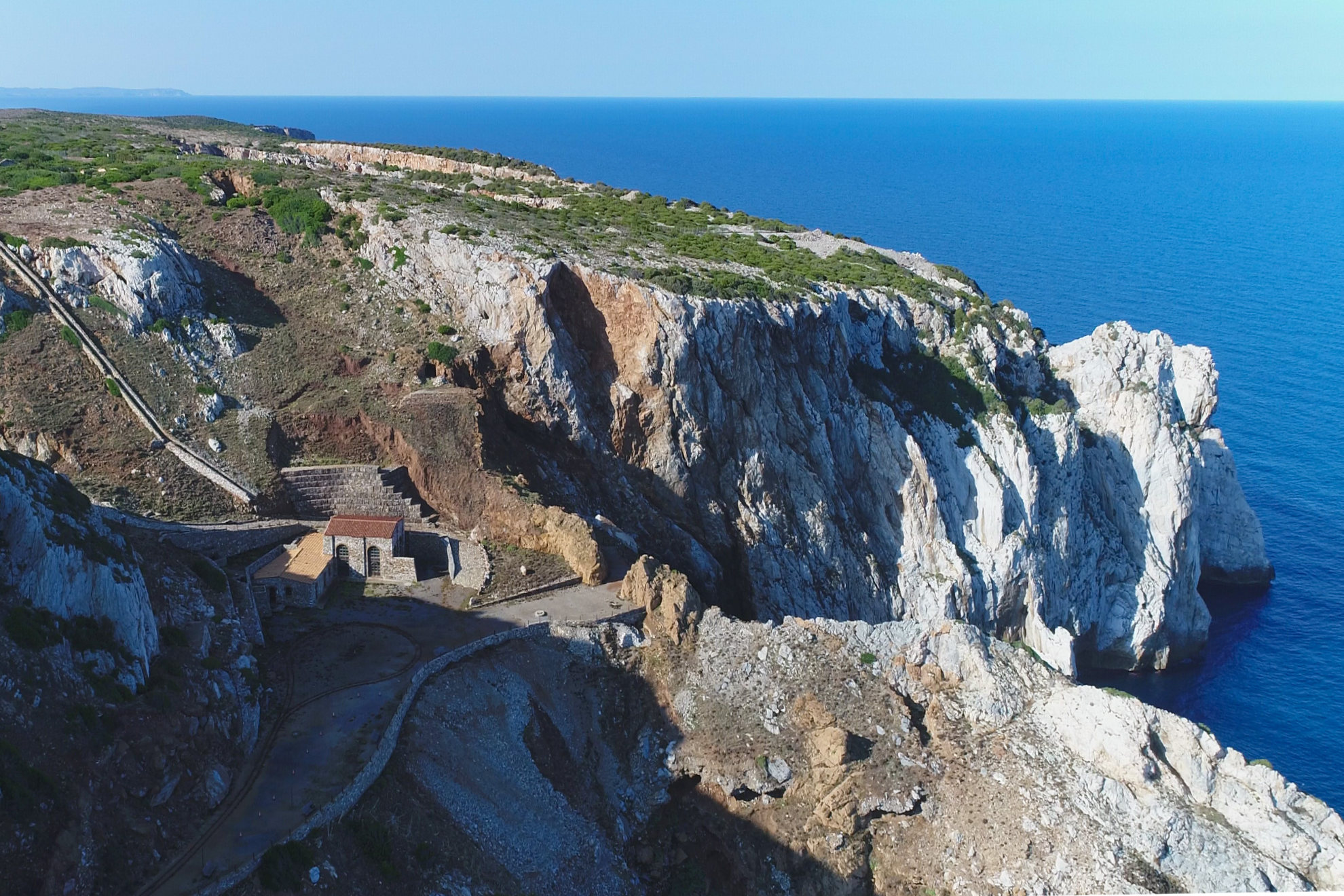
«The Henry Gallery is in fact a natural park - says Stefano, as we dive again through the tunnels - In some places, for instance, small stalactites are forming, whose growth we can see from year to year. The Gallery is therefore not a dead environment, but it is constantly evolving».
The color of minerals | Ph. Enrico Nocera
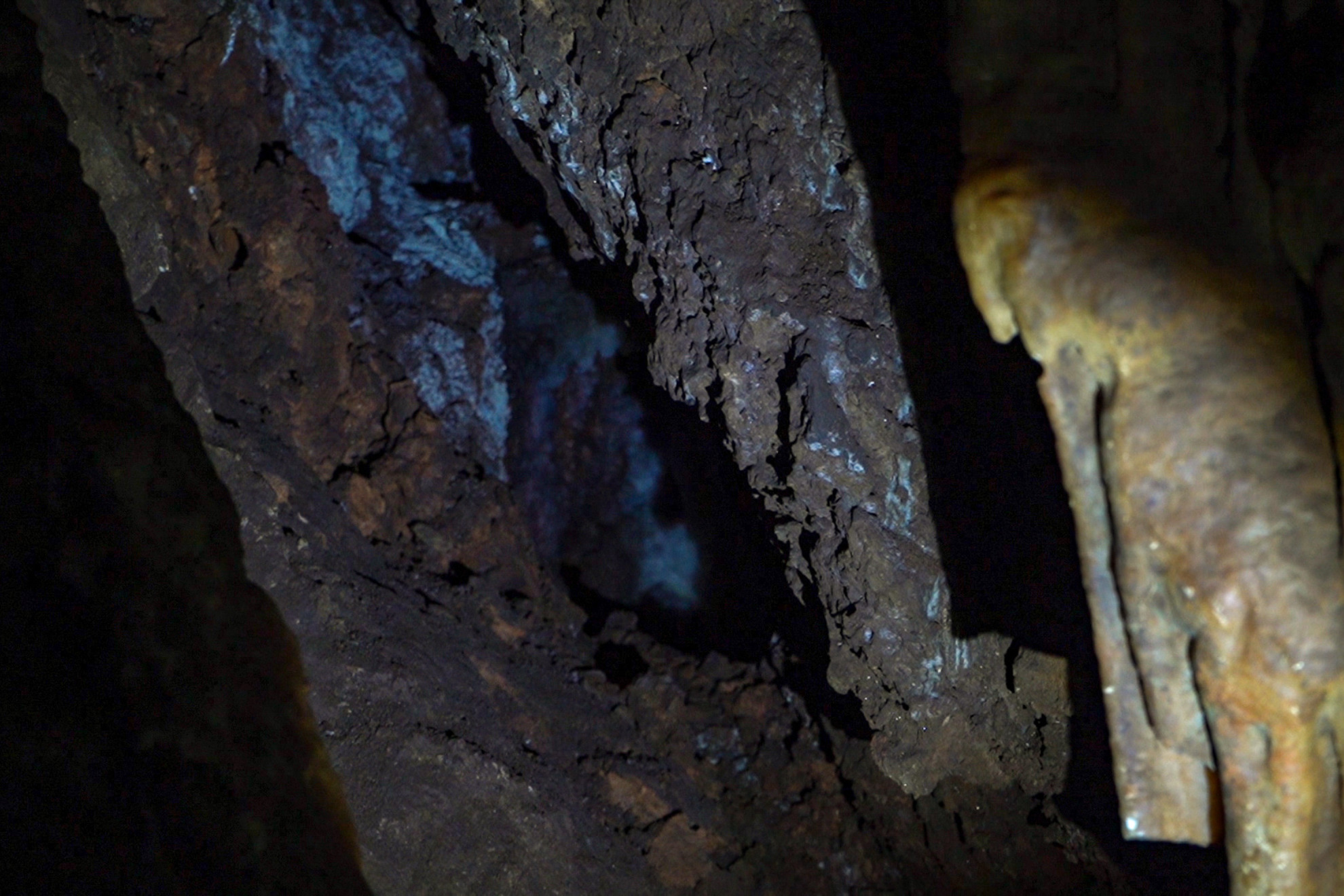
History and Nature come together in an intimate and complex intertwining. The sparkling colors of the minerals, illuminated by Stefano's torch, counterpoint the ancient routes of the material. The wagons of the steam train carried the raw minerals from the underground yards to the washing facilities, then continued towards the marina and embarked on the boats. Even before the train, the tunnels that we walk today were crossed by mules to almost unimaginable depths. In all, the tunnel system - connected by a shaft - extends for about six kilometers.
Ph. Enrico Nocera

Today the town of Buggerru, thanks to these impressive works of industrial archeology, is part of the Geomineral Park of Sardinia, recognized as a World Heritage Site by Unesco. A journey through time and beauty, suspended between tragic stories of exploitation and pages of social redemption, framed by a naturalistic site that can really be considered unique in the world.

